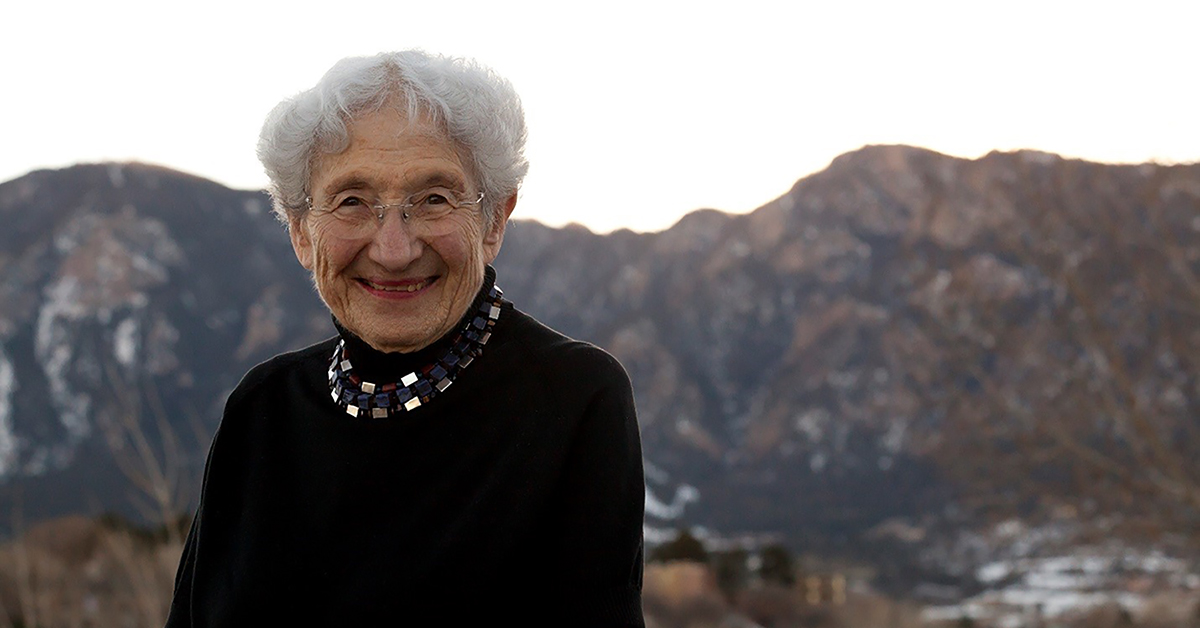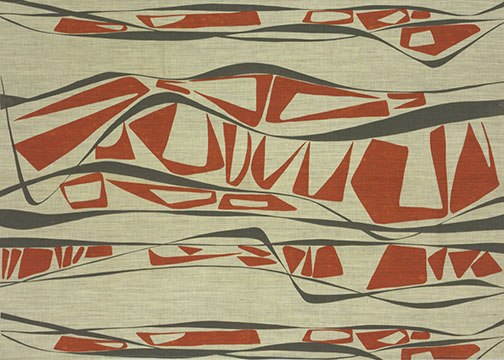TEXTILE ARTIST RUTH ADLER SCHNEE SELECTED AS 2015 KRESGE EMINENT ARTIST

Ruth Adler Schnee
Groundbreaking Textile Artist Ruth Adler Schnee has been Named the 2015 Kresge Eminent Artist
Schnee’s eye and imagination have brought colorful, abstract textiles and designs into personal, commercial and civic spaces in the post-World War II era. From living rooms, fitting rooms and hospital rooms to museums, showrooms and skyscrapers, her textiles appear in the most intimate and the most iconic settings.
Schnee joins six other artists who, since 2008, have received the Kresge Eminent Artist award recognition of professional achievements, contributions to metropolitan Detroit’s cultural community and dedication to Detroit and its residents. The award includes a $50,000 prize.“Ruth Adler Schnee has been a pioneer not only in defining the modern look of architectural interiors, but also in redefining postwar America’s sense of public space,” says Rip Rapson, Kresge’s president and chief executive officer. “Her work and her influence also reach intimately into homes here in Southeast Michigan and across the country, where she may not be a widely recognized name, but has brought the crisp look and feel of the modern design era.”
Schnee’s numerous awards include:
- Conde Nast Prix de Paris (1945)
- Chicago Tribune Award (1946)
- American Institute of Decorators Award for Printed Textiles (1947, 1948, 1957, and 1958)
- House & Garden Magazine Award (1948)
- Key to the city of Detroit (1976)
- International Color Award by the American Institute of Architects (1979)
- Honorary doctorate, College for Creative Studies (2012)
ESCAPE TO DETROIT
Schnee was born Ruth Adler in Frankfurt, Germany, in 1923. Her family soon after moved to Düsseldorf. Schnee’s parents exposed her to art, music and design early, as evidenced in the detailed drawings of interiors she made as a child. An accomplished artist in her own right, Schnee’s mother studied calligraphy at the influential Bauhaus school of design. The artist Paul Klee was a family friend, and as a child Ruth spent many days playing with mobiles on the floor of his studio.The Adler home was decorated with an eclectic array of contemporary and traditional art and furniture.
That home was destroyed – and with it any sense of a future for the Adlers in Germany – in the Nazis’ Kristallnacht pogrom against Jewish homes and institutions in November 1938. The family salvaged what it could and the following year fled to the United States, settling in Detroit. In the interview with her daughter, Schnee recalls the central role that art played in her upbringing: “We came to Detroit without a job or money, and before looking for a job my parents took us to the Detroit art institute.”
Schnee studied art at Cass Technical High School. “I simply blossomed when I got to Cass,” she says, “because it was my love. … I just went wild.”
In 1942, she was awarded a full four-year scholarship to the Rhode Island School of Design (RISD). While there she traveled to Harvard to attend lectures by Bauhaus founder Walter Gropius, who was head of the architecture school there.
After graduating from RISD, she worked in New York with the renowned industrial designer Raymond Loewy. In 1945, Schnee returned to Michigan on a one-year fellowship to attend Cranbrook Academy of Art in Bloomfield Hills, where she was the first woman to earn a graduate degree in architecture. Eliel Saarinen, department head and Schnee’s mentor, instilled the importance of entering competitions as a means to establishing a noteworthy career. Winning a Chicago Tribune residential design competition in 1946 launched Schnee’s career in custom fabric design.
“The competition was to design a house encompassing all the modern gadgets that were designed during the war but had just come on the market,” Schnee recalls. “My house was designed in glass and steel with large open spaces in the Mies van der Rohe style, but I could not find fabrics to fit the house. Everything on the market was French provincial. So I designed my own drapery fabric.”
You have to look at things, see things. Everything around us is a design that can be put on paper, as a design: the simpler, the better.
Ruth Adler Schnee
2015 Kresge Eminent Artist
Customers were slow to respond, however, preferring the mass market styles sold in department stores. Still, Schnee was dedicated to her ideas and continued production; her husband found deep satisfaction at the store, educating the public about fresh, independent design that included work by craftsmen the couple discovered while visiting friends in Mexico.
“We just couldn’t earn a living in the early days,” she says, “but I was inspired by art and nature. It’s a simple thing, but true.”
Even if sales began slowly, the artisanal objects sold at Adler-Schnee became more common in kitchens and living rooms across the metro area. The store represented a portal through which art education entered urban and suburban households – and the Schnees were the teachers.
Schnee says she still believes that one of the best lessons to learn about creativity is the importance of being observant. The everyday environment is a wellspring that nourished her career. She continues to impart one piece of advice: “You have to look at things, see things,” she says. “Everything around us is a design that can be put on paper, as a design: the simpler, the better.”
ABOUT THE AWARD
The Kresge Eminent Artist award is unrestricted and is given annually to an artist who has lived and worked in Wayne, Oakland or Macomb counties for a significant number of years. In addition to the cash prize, the award includes the creation of a monograph commemorating the artist’s life and work.
Past winners are visual artist Charles McGee, master jazz trumpeter Marcus Belgrave, poet and playwright Bill Harris, poet and publisher Naomi Long Madgett, composer and Michigan Opera Theatre artistic director David DiChiera and photographer Bill Rauhauser.
The 2015 recipient was selected by the Kresge Arts in Detroit Advisory Council, a volunteer group of leaders in the metropolitan Detroit cultural community. Its members are:
- Devon Akmon, Director, Arab American National Museum
- Gary Anderson, Artistic director and co-founder, Plowshares Theatre Company
- Jane Hoehner, Director, Wayne State University Press
- Cary Loren, Co-owner, The Book Beat, 2013 Kresge Artist Fellow in the Literary Arts
- Judith Molina, Director, Institute of Music & Dance at Marygrove College
- Juanita Moore, President and CEO, Charles H. Wright Museum of African American History
- Marsha Philpot (aka Marsha Music), Writer, 2012 Kresge Artist Fellow in the Literary Arts
- Gregory Wittkopp, Director, Cranbrook Art Museum and Cranbrook Center for Collections and Research

